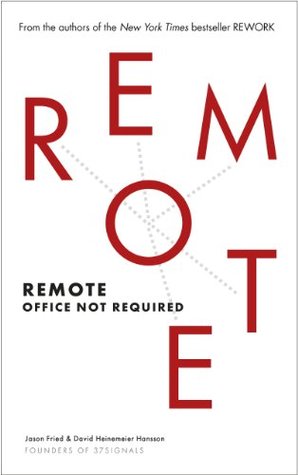More on this book
Community
Kindle Notes & Highlights
Working remotely makes it easier to spot managers drumming up busywork for themselves and others. The act of pulling people into a conference room or walking to their desks leaves no evidence of interruption, and it’s all of the synchronous “drop what you’re doing right now to entertain me!” variety. But when management is forced to manage remotely using email, Basecamp, IM, and chat, its intervention is much more purposeful and compressed, and we can just get on with the actual work. M&Ms continue to have a place in the remote-working world, but you’ll be more conscious about how many you
...more
One way to help set a healthy boundary is to encourage employees to think of a “good day’s work.” Look at your progress toward the end of the day and ask yourself: “Have I done a good day’s work?” Answering that question is liberating. Often, if the answer is an easy “yes,” you can stop working feeling satisfied that something important got accomplished, if not entirely “done.” And should the answer be “no,” you can treat it as an off-day and explore the Five Whysfn1 (asking why to a problem five times in a row to find the root cause).
Here’s how to guarantee a remote-work failure: Pick one employee who gets to “give this remote thing a try,” then just carry on with business as usual. Three months later, mourn how it just didn’t work out for your organization. “Jim simply wasn’t connected enough anymore.” Well, duh. You can’t experiment with working remotely by sending one or two people to Siberia. To give it a proper try, you need to set free at least an entire team—including project management and key stakeholders! And then you need to give it longer than it takes to break in a new pair of shoes.
On Writing Well by William Zinsser The Elements of Style by William Strunk and E. B. White Revising Prose by Richard Lanham
The fact is, it’s easy to turn work into your predominant hobby. Hmmm, my partner is off to see friends for the evening? Might as well just finish up this one project. Ah, it’s raining this Saturday? Well, I guess I could just finish that one report for the Tuesday conference call.
However, when such meetings occur all the time, they begin to lose their value. Whereas before they’d been the perfect opportunity for a high-value exchange of information, they start to become routine, tired, played out, and, ultimately, an enormous waste of time.
So go on—make face-to-face harder and less frequent and you’ll see the value of these interactions go up, not down.
This doesn’t mean you have to dress up in a suit every day (but if that’s what floats your boat, get that bow tie spinning!). We’re merely suggesting that you demarcate the difference between work and play. Simply looking presentable is usually enough. One of our employees, Noah, likes to demarcate using his slippers: he has both a work set and a home set!
It sounds counterintuitive, but the presence of other people, even if you don’t know them, can fool your mind into thinking that being productive is the only proper thing to do. Who really wants to be the slacker sitting in a coffee shop during working hours, watching silly cats on Reddit or playing a video game?


